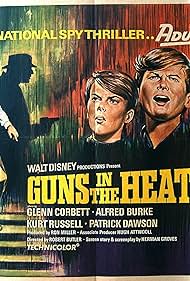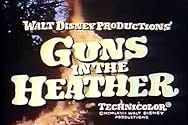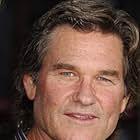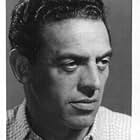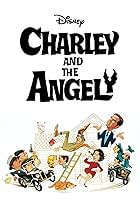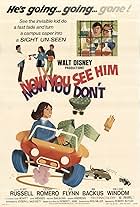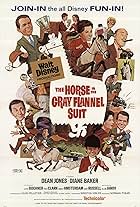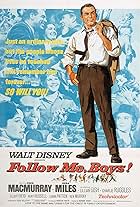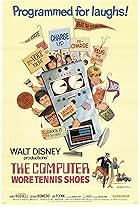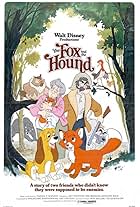Walt Disney's 3-part made-for-TV feature, The Secret of Boyne Castle (1969), originally shown on "Walt Disney's Wonderful World of Color" (the new title for "Disneyland"), re-edited into fea... Read allWalt Disney's 3-part made-for-TV feature, The Secret of Boyne Castle (1969), originally shown on "Walt Disney's Wonderful World of Color" (the new title for "Disneyland"), re-edited into feature film form for European theatrical release.Walt Disney's 3-part made-for-TV feature, The Secret of Boyne Castle (1969), originally shown on "Walt Disney's Wonderful World of Color" (the new title for "Disneyland"), re-edited into feature film form for European theatrical release.
Photos
- Director
- Writers
- All cast & crew
- Production, box office & more at IMDbPro
Storyline
Did you know
- TriviaThis was the supporting feature to the original UK release of The Love Bug (1969).
- Alternate versionsThe three-part made-for-television version, with the title "The Secret of Boyne Castle", is over 30 minutes longer than the theater version.
- ConnectionsEdited from The Magical World of Disney: The Secret of Boyne Castle: Part 1 (1969)
Featured review
I felt prompted by the only other reviewer who panned the movie to write something in its defence. While I can't entirely disagree, I think some latitude should be allowed, considering it's from the Disney stable, and targeting a young audience for a Sunday afternoon - it is fairly typical of its genre.
As for being three hours long, it may well have been possible to have edited the three 60min episodes down to a more digestible 2+hrs, but I'm not sure how much better the movie would have become.
As a positive, the movie didn't fall prey to that American habit of using American actors trying to do an American concept of an Irish accent, with begorrahs peppering the dialogue! For me, the beauty lies in the unspoiled and untamed wilderness of the scenery, the primitive roads, the unaffected local accents and people, and some rarely seen footage of Ireland in the late 1960's. To an American (and European) audience, this would have been like stepping back to the pre 1940's. In Ireland in the 1960's, a donkey and cart drawing hay would not have been uncommon in many areas, particularly in the West. Likewise, the Gypsy caravan could be seen on the roads into the 1970's, if only as tourist re-inventions.
I cannot identify most of the cars - a Daimler I think, certainly a Triumph Herald, and a jalopey...all cars of the correct British vintage, if not in common use in Ireland. There is a beautiful Lagonda Rapide reg CZB678, and a zippy TR4 reg FIN896. There is also a recurring cameo of a classic steamroller, an increasingly common sight on Irish roads in the 1960's as the road network was increasingly tarmaced.
One slightly puzzling (to me) feature is a prominent bi-lingual road sign indicating Bla Claith DUBLIN. While the road sign looks genuine, the Irish spelling is bizarre - but it may well be a genuine mistake on the part of the road sign makers! The train seen in the movie is B151, a Class 141 diesel, part of a shipment of 37 trains built by General Motors in Illinois in 1962. The last of these trains was taken out of service in 2010. The passenger carriage is a lovely old style coach, which lasted in certain regions into the 1990's. There was something genteel and refined about traveling in a compartment, and walking the corridors to find the dining car.
The plane seen in the movie is a BEA Trident flight from Dublin to Heathrow using a Hawker Siddeley Trident. The flight number heard over the tannoy may not be correct, but interestingly, the very last flight of BEA before it was absorbed into the new British Airways in 1974, was BEA flight 943 ex Dublin to Heathrow, arriving just before midnight. At midnight, BEA, at one point the largest and busiest airline in Europe, ceased to exist.
The Sullivans Royal Hotel, where the character Tom is staying, is a real family-run hotel, and still in operation today in Gort, Co Galway.
All in all, I enjoyed the movie just for its glimpses into a bygone world. The world is not transformed by Hollywood into something imagined , but retains a real world aura that is delightful to absorb.
If you are of a certain age, or of a certain heritage, I'm sure this movie will appeal - even if you largely ignore the actors parading their skills before you.
As for being three hours long, it may well have been possible to have edited the three 60min episodes down to a more digestible 2+hrs, but I'm not sure how much better the movie would have become.
As a positive, the movie didn't fall prey to that American habit of using American actors trying to do an American concept of an Irish accent, with begorrahs peppering the dialogue! For me, the beauty lies in the unspoiled and untamed wilderness of the scenery, the primitive roads, the unaffected local accents and people, and some rarely seen footage of Ireland in the late 1960's. To an American (and European) audience, this would have been like stepping back to the pre 1940's. In Ireland in the 1960's, a donkey and cart drawing hay would not have been uncommon in many areas, particularly in the West. Likewise, the Gypsy caravan could be seen on the roads into the 1970's, if only as tourist re-inventions.
I cannot identify most of the cars - a Daimler I think, certainly a Triumph Herald, and a jalopey...all cars of the correct British vintage, if not in common use in Ireland. There is a beautiful Lagonda Rapide reg CZB678, and a zippy TR4 reg FIN896. There is also a recurring cameo of a classic steamroller, an increasingly common sight on Irish roads in the 1960's as the road network was increasingly tarmaced.
One slightly puzzling (to me) feature is a prominent bi-lingual road sign indicating Bla Claith DUBLIN. While the road sign looks genuine, the Irish spelling is bizarre - but it may well be a genuine mistake on the part of the road sign makers! The train seen in the movie is B151, a Class 141 diesel, part of a shipment of 37 trains built by General Motors in Illinois in 1962. The last of these trains was taken out of service in 2010. The passenger carriage is a lovely old style coach, which lasted in certain regions into the 1990's. There was something genteel and refined about traveling in a compartment, and walking the corridors to find the dining car.
The plane seen in the movie is a BEA Trident flight from Dublin to Heathrow using a Hawker Siddeley Trident. The flight number heard over the tannoy may not be correct, but interestingly, the very last flight of BEA before it was absorbed into the new British Airways in 1974, was BEA flight 943 ex Dublin to Heathrow, arriving just before midnight. At midnight, BEA, at one point the largest and busiest airline in Europe, ceased to exist.
The Sullivans Royal Hotel, where the character Tom is staying, is a real family-run hotel, and still in operation today in Gort, Co Galway.
All in all, I enjoyed the movie just for its glimpses into a bygone world. The world is not transformed by Hollywood into something imagined , but retains a real world aura that is delightful to absorb.
If you are of a certain age, or of a certain heritage, I'm sure this movie will appeal - even if you largely ignore the actors parading their skills before you.
Details
- Runtime2 hours 24 minutes
- Color
- Aspect ratio
- 1.37 : 1
Contribute to this page
Suggest an edit or add missing content

